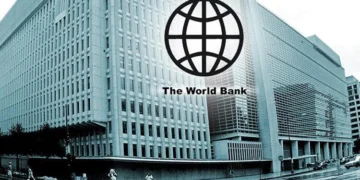Despite stringent measures being adopted by Chinese authorities, the rise of Covid cases in the country is worrisome. Several major cities including Beijing are experiencing serious outbreaks. Inside Beijing’s Chaoyang district most of the businesses are closed and residents are ordered to remain indoors for the next few days. It seems that in the beginning of 2023, this country will be heading towards its fourth year of the Covid crisis and Zero-Covid has a never ending feeling to it. While WHO ensured that the end of Covid is near but the reality is different in case of China.
The Omicron variants that are circulating in China right now are far more infectious than the previous subvariants and this is the reason behind the sudden COVID surge despite the strong measures being enacted by Chinese authorities. Omicron BF 7 variant imported from the trading town is the reason of the sudden outbreak. The infection has mainly sperad in Chaoyang, Changping, Haidian, Fengtai and Tongzhou districts. The next reason is the poor vaccination rate in the country. It is reported that only about half of the people in China aged 80 and above have received their primary vaccinations, with fewer than 20% of them having secured a booster. Fewer than 60% of the 60-69 age group is fully vaccinated.
IS China’s vaccine not as effective as claimed by WHO??
In mid-2021, on the basis of limited clinical-trial data, the World Health Organization (WHO) approved for emergency use of China’s vaccines suggesting that coronaVac was 51% and Sinopharm was 79% effective at preventing symptomatic disease. This was on par with the 63% efficacy reported for the University of Oxford–AstraZeneca’s viral-vector vaccine at the time of its WHO listing, but lower than the 90% and higher efficacies of the mRNA vaccines developed by Pfizer–BioNTech and Moderna. Vaccines named CoronaVac, produced by Beijing-based Company Sinovac and Beijing’s state-owned Sinopharm are the world’s most widely used COVID-19 vaccines.
Traditionally vaccines are dead or weakened virus molecules that trigger defensive white blood cells in the immune system to create antibodies that bind to the virus and neutralize it. Sinopharm’s COVID-19 vaccine, which contains inactivated coronaviruses, is one such example. Another method was used by Novavax’s COVID-19 vaccine which is an isolated protein from a virus. Pfizer, BioNTech and Moderna used virus genetic material i.e., mRNA, which is considered as the highly effective vaccine produced. Viral vectors were used by AstraZeneca [1].
They Relied on Chinese Vaccines. Now they’re Battling Outbreaks!
Researchers claim that CoronaVac&Sinovac type of vaccines seems to be less potent because it triggers an immune response against many viral proteins. By contrast, mRNA and viral-vector vaccines of Pfizer–BioNTech and Moderna target the response to the spike protein from where it enters into the human cells. The countries such as the Seychelles and Indonesia who imported most of the Chinese vaccine were worried about the protection they offered. The rapid spread of the omicron variant was a major factor, as Chinese health officials acknowledged that Chinese vaccines were not as effective against omicron. In a paper published in March by the University of Hong Kong and others, a study on about 4,300 people who were infected after receiving two shots in Hong Kong found that the number of people with severe symptoms who were vaccinated with the Sinovac vaccine were more than triple than those vaccinated with Pfizer’s. [2]
The situation is worsening every passing day. There are two apparent reasons for the Chinese woes. First, Beijing’s much-touted ‘Zero Covid’ policy has failed to achieve the expected outcome and second is the inefficacy of Chinese vaccines against coronavirus. The ineffectiveness of vaccines had left Chinese authorities with no option but to rely on forced lock-downs to break the chain of infection which has adversely affected people’s livelihood and has caused loss of jobs and income.
Will new vaccine, an image saviour for China?
CanSino Biologics Inc, a Chinese company developed a vaccine called Convidecia Air which uses the adenovirus vector technology. It is the first needle-free option that can be inhaled. China is speeding up the research as they fell short of expectations from vaccines from mRNA technology. In 2021, Tianjin-based biopharmaceutical company, CanSino Biologics (CanSinoBIO) completed a Phase III clinical trial of their intramuscular COVID-19 vaccine, which involved 45,000 volunteers globally. The vaccine was subsequently approved for use in China, Hungary, Pakistan, Malaysia, Argentina, and Mexico.
The inhalable vaccine is yet another test for the Chinese vaccine industry, which made billions of dollars following the onset of Covid-19, by selling lower efficacy vaccines to many countries worldwide, especially lower income countries. There have been various complaints raised about selling the vaccine at higher rates than normal in these lesser developed countries by China’s vaccine makers. The lower efficacy of these globally distributed Chinese vaccines has resulted in prolonged Covid-19 infections in many countries which were dependent on them. The same seems to be the case in China also, and new variants which are immune to these Chinese vaccines are resulting in widespread increase in Covid-19 cases.
After COVID-19 pandemic the communist Government had become the target of criticism. Neither Chinese vaccines were able to repair the image nor did the ‘Zero Covid’ policy achieve the expected outcome for China. Now, the matter to look upon is whether the “inhaling vaccine” be a game changer or it will be another failure of China’s self promoted vaccines.
- https://www.frontiersin.org/articles/10.3389/fcimb.2021.596201/full
- doi: https://doi.org/10.1038/d41586-021-02796-w





















